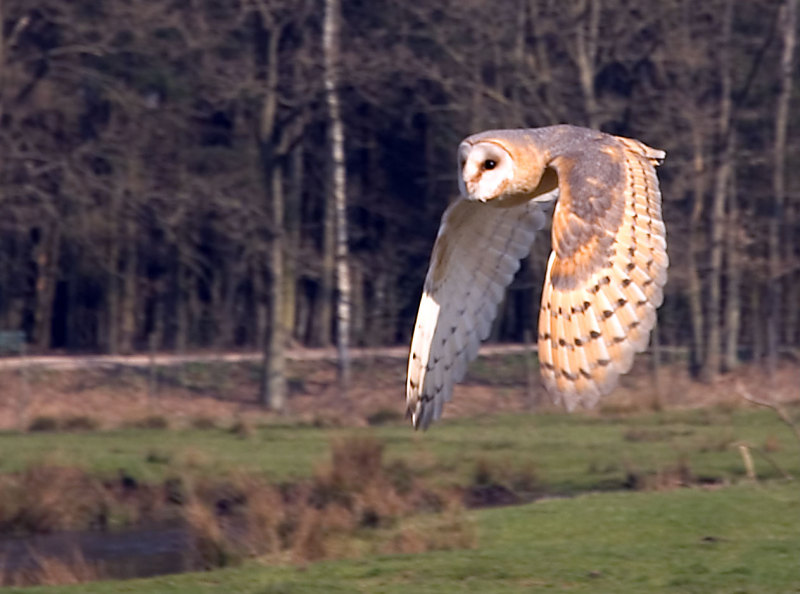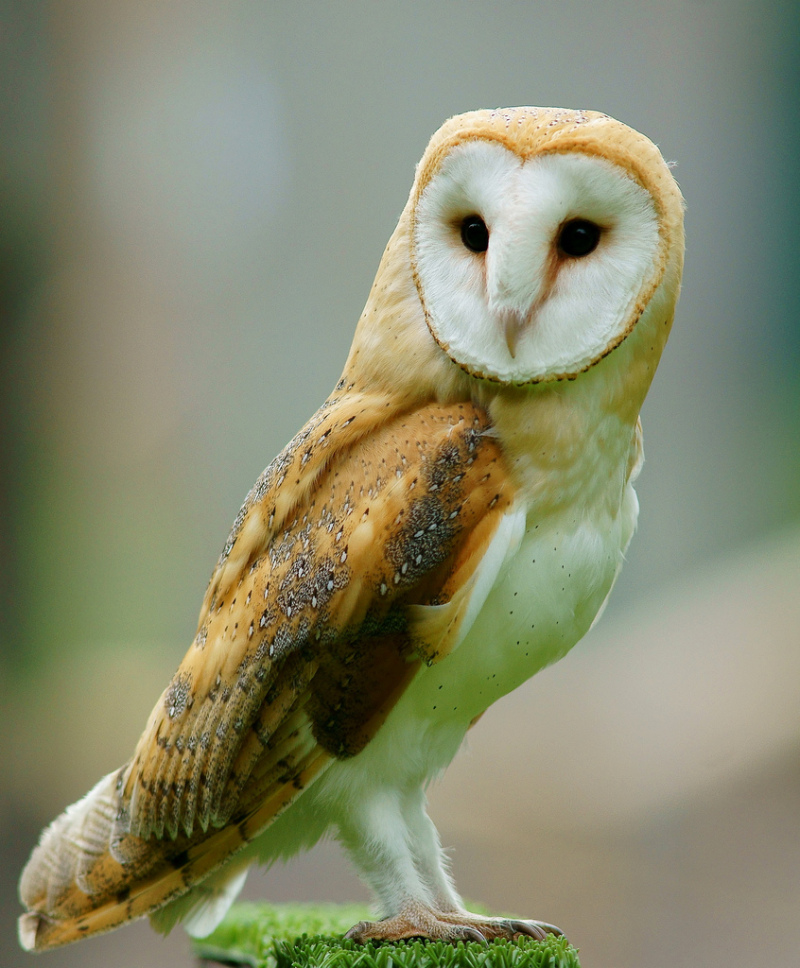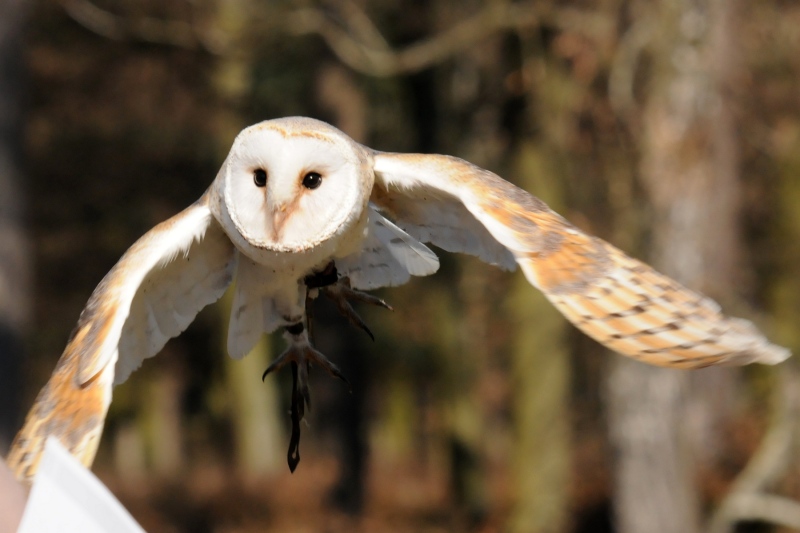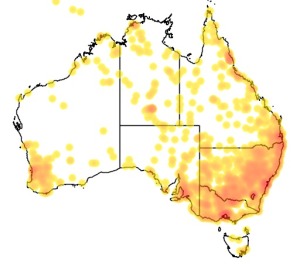Colours
Distinguishing features
Tail shape is a way of distinguishing it from true owls when seen in flight, as are the wavering motions and the open dangling feathered legs.
The light face with its heart shape and the black eyes give the flying bird an odd and startling appearance, like a flat mask with oversized oblique black eyeslits, the ridge of feathers above the bill somewhat resembling a nose.
Its head and upper body typically vary between a light brown and a light colored and dark grey (especially on the forehead and back) feathers in most subspecies. Some are purer, richer brown instead, and all have fine black-and-white speckles except on the remiges and rectrices, which are light brown with darker bands. The heart-shaped face is usually bright white, but in some subspecies it is browner. The underparts (including the tarsometatarsus feathers) vary from white to reddish buff among the subspecies, and are either mostly unpatterned or bear a varying amount of tiny blackish-brown speckles. It was found that at least in the continental European populations, females with more spotting are healthier on average. This does not hold true for European males by contrast, where the spotting varies according to subspecies.
The bill varies from pale horn to dark buff, corresponding to the general plumage hue. The iris is blackish brown. The toes, as the bill, vary in color; their color ranges from pinkish to dark pinkish-grey. The talons are black.
On average, within any one population, males tend to be less spotted on the underside than females. (Wikipedia)
Size
- From 25 cm to 50 cm (Length of specimen)
Wingspan
- From 75 cm to 110 cm
Synonyms
Distribution
Distribution and habitat preferences
It is found almost anywhere in the world except polar and desert regions, Asia north of the Alpide belt, most of Indonesia, and the Pacific islands.
It is a bird of open country such as farmland or grassland with some interspersed woodland. (Wikipedia)
Audio recordings
Recorded at Waregem, West-Vlaanderen, Vlaams Gewest in Belgium.
© Eddy Scheinpflug
(source)
Diet
It hunts by flying low and slowly over an area of open ground, hovering over spots that conceal potential prey. They may also use fence posts or other lookouts to ambush prey. It feeds primarily on small vertebrates, particularly rodents. (Wikipedia)



